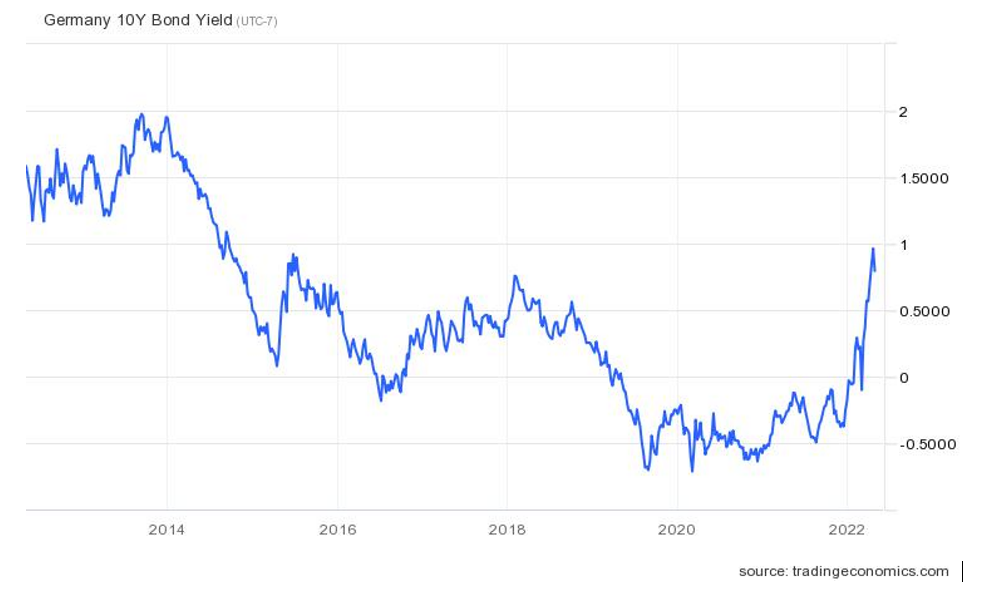Negative yields are one of the mysteries of financial markets. In theory, no one should buy a bond with a yield below zero. If held to maturity, that bond is guaranteed to deliver a loss.
Yet trillions of dollars were invested in negative-yielding government bonds until recently.
There’s speculation the yields once were driven by central banks’ buying. Quantitative easing programs required central banks around the world to buy bonds. Their goal was to stimulate the economy rather than to earn income. Yields weren’t important, and the purchases continued even as rates fell below zero.
As central banks adopt more aggressive policies, rates are rising and even moving above zero in some countries. The chart of bond yields on 10-year German government show the recent sharp rally that ended almost two years of negative rates.
A Surprise Spike in German Bond Yields

Source: TradingEconomics.com.
This could indicate a return to normalcy. If central banks stop buying, interest rates should rise to levels that compensate investors for the risks of inflation.
But if central banks stop buying, inflationary pressures should also ease.
Connection Between Bond Yields and Inflation
Central banks have bought trillions of dollars in bonds. They bought many of these bonds directly from governments. This allowed countries to increase budget deficits without raising their borrowing costs. As governments took advantage of that, money poured into economies. This led to inflation.
None of this should be a surprise. It seems to be largely hubris keeping central bankers from admitting inflation was a threat. They somehow thought they found a new way to create money.
They weren’t the first to believe this. John Law convinced the king of France he could issue paper money to fund exploration in the New World and support the kingdom in the 1720s. That experiment lasted five years before collapsing.
Bottom line: This time might be different.
Global currencies are unlikely to collapse. But there is almost certainly a price to pay for the recent experiment of quantitative easing. That price is higher interest rates … and that story is just beginning.
Michael Carr is the editor of True Options Masters, One Trade, Peak Velocity Trader and Precision Profits. He teaches technical analysis and quantitative technical analysis at the New York Institute of Finance. Follow him on Twitter @MichaelCarrGuru.




